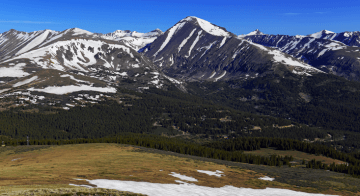Burnd Brunner in Nautilus:
 Winter is changing its character. Since the beginning of the 21st century, glaciers have been melting at record speed. In Central Asia, they’ve lost approximately one quarter of their volume over the past 50 years. An ice grotto in Switzerland that is creeping down the slope as the Rhône Glacier advances is now covered with white blankets every summer to help preserve it. When a glacier ceases to flow and begins to melt, glaciologists use the term dead-ice, and when dead-ice melts completely, it leaves behind an uneven terrain full of potholes. Depending on their shape and location, these are known as donuts, puckered lips, or kettles. The highest ski resort in the world used to be on the glacier at the summit of Mount Chacaltaya in Bolivia. The glacier, 17,785 feet above sea level, disappeared years ago, and scientists have calculated that glaciers will continue to melt even if humans somehow manage to reduce the amount of greenhouse gases entering the atmosphere.
Winter is changing its character. Since the beginning of the 21st century, glaciers have been melting at record speed. In Central Asia, they’ve lost approximately one quarter of their volume over the past 50 years. An ice grotto in Switzerland that is creeping down the slope as the Rhône Glacier advances is now covered with white blankets every summer to help preserve it. When a glacier ceases to flow and begins to melt, glaciologists use the term dead-ice, and when dead-ice melts completely, it leaves behind an uneven terrain full of potholes. Depending on their shape and location, these are known as donuts, puckered lips, or kettles. The highest ski resort in the world used to be on the glacier at the summit of Mount Chacaltaya in Bolivia. The glacier, 17,785 feet above sea level, disappeared years ago, and scientists have calculated that glaciers will continue to melt even if humans somehow manage to reduce the amount of greenhouse gases entering the atmosphere.
Investigations confirm that the snow cover in Earth’s Northern Hemisphere is diminishing. In many places, winter is getting shorter and spring is setting in earlier. A well-known saying in France—“If you could sell snow, you’d be rich”—is no longer universally applicable. Shorter winters disrupt many natural processes; they also affect the activities we undertake during the season.
More here.
